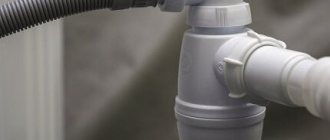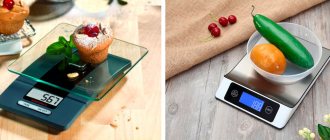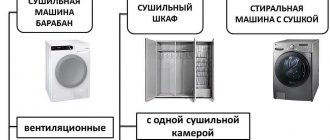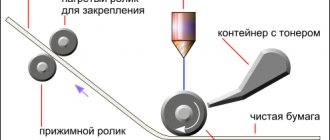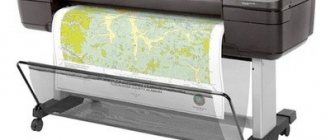What types of tonometers are there?
A tonometer is a special device for measuring blood pressure. The indicators are displayed immediately and provide complete information about the level of blood pressure and heart rate. Any deviations from the norm are manifested by unpleasant symptoms: headache, nausea, dizziness.
The modern market is pleased with various devices for measuring the indicators under consideration. They differ in the range of functions they perform, the accuracy of readings, dimensions and cost.
There are two types of devices: mechanical and electronic. The former are divided into semi-automatic and automatic. Fully automated devices are divided into two subtypes: shoulder-mounted and wrist-mounted. They all differ in type and order of measurement, and also have pros and cons. But automatic models are considered the most accurate and reliable. For home use, you can purchase any of them; it is important to consider the functionality of the device, its cost and reliability.
The design of a mechanical tonometer and its operating principle
Mechanical devices are divided into mercury manometers and membrane ones.
How does a mercury manometer work?
Mercury manometer
The very first device for measuring indicators was a mercury mechanical one. Currently, it is practically not used. But it is considered the most accurate device for measuring blood pressure. It differs from modern ones by the presence of a mercury scale. Its column rises to the required number - this is blood pressure. The remaining devices do not differ from modern ones: a cuff attached to the shoulder, a pump for supplying air, a phonendoscope for capturing tones. The device is unsafe - if you move it carelessly, the scale with mercury can fall out and break, and the toxic liquid can spread across the floor. Therefore, this device was no longer used.
How does a mechanical membrane tonometer work?
Its operation is due to the presence of a sensitive part - a membrane. This is a flexible plate that bends under pressure and, under the influence of additional mechanisms, moves the needle on the pressure gauge scale. The device quite accurately displays the health status indicator, is safe and has a wide range of applications. It is considered a professional tonometer; all medical institutions are equipped with it. For proper use, skills are required; medical personnel are trained in them. At home, it is difficult to measure blood pressure on your own; the main difficulty lies in listening to tones.
Mechanical tonometer
The measuring procedure is as follows:
- Place the cuff on the forearm, slightly above the bend of the elbow.
- Place the phonendoscope on the vessel in the bend area.
- Inflate the cuff with air using a bulb.
- Gradually releasing air from the cuff with a special valve, listen to the tones and look at the arrow.
- The first “knocks” are systolic pressure.
- The final ones are the diastolic indicator.
Modern manufacturers simplify the design of the device. There are models with a phonendoscope inserted into the cuff. And some have a pear combined with a scale.
The advantages of a mechanical tonometer are listed by the following factors:
- low cost;
- high measurement accuracy;
- simple device and durability of use.
The disadvantages of the device include:
- measurement requires special skills, keen hearing and good vision;
- it is difficult to measure without outside help, otherwise the indicators will be distorted;
- no additional features.
For home use, it is better to purchase another type of tonometer.
Advantages and disadvantages of automatic tonometers
Automatic blood pressure monitor
Today, many people prefer to use an automatic device, considering it a good blood pressure monitor compared to older devices. Such a device does have several advantages, which include:
- There is no need to operate the blower or ask anyone to do it: the air is supplied automatically. The device can be used by almost all age categories of people.
- The device can be used by attaching it to your shoulder, wearing it on your wrist, or attaching it to your finger.
Mounting the device on the shoulder is the most acceptable use case. Especially for those who suffer from cardiovascular diseases.
- The automatic device is small in size. You can use it at home and take it with you on a trip.
- The compact device has a large screen on which all readings are clearly visible.
- The measured pressure results are very accurate.
- You can work without taking off your clothes.
The machine uses AA batteries as power supply. The disadvantages of this type of device include:
- Higher reading error compared to mechanical and semi-automatic devices.
- High cost of the device.
- Regular change of batteries, which is not very convenient.
Any of the described devices can measure blood pressure at home.
About electronic devices
Electronic devices are divided into semi-automatic and automatic. The principle of operation is similar, but there is a difference in use.
How does a semi-automatic blood pressure monitor work?
Semi-automatic blood pressure monitor
This type of device also has a bulb and cuff, but instead of a scale there is an electronic screen and buttons for control. It is quite similar to a mechanical device, but simpler to operate. You need to use a pear to fill the cuff with air, and then wait until the tonometer itself processes the signals and displays the indicators in large numbers on the display.
The tonometer operates on electricity or batteries. The device is compact, quite accurate in readings and equipped with additional functions.
The advantages of the device include the following features:
- good accuracy, error up to 3 mm Hg. st;
- average cost;
- no need to listen to “knocks” and follow the pressure gauge needle;
- compact, easy to carry with you;
- it contains few electronics and reduces the risk of breakdowns;
- equipped with functions such as heart rate detection and the ability to remember the time of the previous measurement.
The device also has negative sides:
- supplying air with a pear increases the risk of distortion in measurements, which is especially difficult for elderly people;
- there is a need to replace batteries; their discharge usually happens at the wrong time;
- There are also breakdowns that require repair in a workshop.
But it is still the most popular tonometer used in everyday life.
Electronic tonometer: what are its operating principles?
This is the most expensive device of all types of tonometers. The kit includes a cuff and an electronic device connected to it. As soon as the cuff is put on the forearm and the button is pressed, the electric pump built into the device pumps air into it. The entire measurement process takes place automatically, the sensors process the indicators and display them in a digital image on the display screen. Tonometers are quite fragile and require careful handling. Convenient to use and small in size. There is no need to ask for outside help, but just sit comfortably and relax. Can work from mains or batteries.
Automatic blood pressure monitor
Advantages of an electronic tonometer:
- they can measure blood pressure correctly, reducing the risk of incorrect readings;
- measurement error – 3-5 mm Hg. st;
- the procedure is quite simple and accessible to older people;
- small-sized device.
But the newest model of tonometers also has disadvantages:
- high price;
- presence of error;
- short service life.
New models of automatic tonometers have many different functions that allow you to track not only blood pressure. It is necessary to list only the most popular and widespread:
- the device reminds you of the time of previous use;
- presence of arrhythmia indicator;
- presence of an indicator of correct fastening of the cuff;
- shows the average result of several measurements;
- automatically turns off after finishing work.
There are other functions such as a calendar, clock, cuff inflation indicators and many others.
Mechanical
To find out which tonometer is accurate, pay attention to mechanical devices. They consist of a shoulder cuff, a pressure gauge and an air pump with an adjustable valve. Blood pressure readings are determined by listening to characteristic sounds through a stethoscope. In this case, blood pressure is measured by a person who has the appropriate skills, so this type of equipment is recommended for healthcare workers. It is often used in public health facilities such as hospitals. Which tonometer is more accurate - popular models:
- Healthcare CS-105. High-precision mechanical device in a metal case from CS MEDICA. There is a built-in phonendoscope, a cuff (22-36 cm) made of nylon with a fixing metal ring, an elastic bulb with a needle valve and a dust filter. The kit includes a case for convenient storage of equipment. Relatively cheap (870 RUR).
- Healthcare CS-110 Premium. A professional device, the pressure gauge of which is combined with a bulb. Made in a shock-resistant polymer case with chrome coating. An enlarged cuff (22-39 cm) is used without a fixing bracket. There is a large and easy-to-read dial, a pleasant-to-touch pear with a chrome-plated release valve. The measurement accuracy is confirmed by the European standard EN1060. It costs more than its analogues (RUR 3,615).
- Microlife BP AG1-30. This high-precision sphygmomanometer consists of a bulb, an air release valve, and a storage bag. A professional cuff (22-32 cm) with a metal ring is used. The model is popular among domestic doctors. A distinctive feature is the stethoscope head sewn into the cuff. It is inexpensive (1200 rubles).
Operating principle of the sphygnomanometer
When measuring, the stethoscope must be applied to the inside of the elbow. After this, the specialist needs to pump air into the cuff - he does this until, due to compression, the blood pressure level drops to 30-40 mm Hg. Art. greater than the estimated systolic pressure (upper limit) of the person being tested. The air is then released slowly so that the cuff pressure decreases at a rate of 2 mm Hg. per second.
Gradually falling, the pressure in the cuff reaches the patient's systolic value. At this moment, noises called “Korotkoff sounds” begin to be heard in the stethoscope. Diastolic pressure (lower) is the moment when these murmurs end. The operating principle is as follows:
- When the air pressure in the cuff is pumped up and exceeds the same parameter in the vessels, the artery is compressed to such an extent that the blood flow through it is suspended. At this time there is silence in the stethoscope.
- When the pressure inside the cuff decreases and the lumen of the artery opens slightly, the blood flow resumes. At this moment, Korotkoff sounds begin to be heard in the stethoscope.
- When the pressure stabilizes and the artery opens completely, the noise disappears.
How to Measure Yourself Pressure with a MECHANICAL Tonometer
Pros and cons of mechanical devices
Which tonometer is more accurate? When answering this question, a mechanical device is in the lead. Advantages of a mechanical device:
- impressive accuracy;
- affordable cost;
- reliable;
- suitable for measuring blood pressure even in patients with arrhythmia.
The main disadvantage is considered to be the difficulty of operation, especially for older people and patients with poor vision and hearing, impaired movement of the limbs - for them it will be a useless acquisition. To make it easier to measure blood pressure, some models include a cuff with a built-in phonendoscope head and a combined supercharger with a pressure gauge. For this reason, a sphygmomanometer can still be purchased for use at home.
- How to increase the page file in Windows 7
- Falafel - what kind of dish is it? Recipes for making chickpea falafel at home
- What do red moles on the body mean?
Electronic blood pressure monitor with wrist mounting
Among the electronic tonometers there is a model that measures pressure on the wrist. This device does not have a cuff, but is simply attached to the wrist, and indicators are displayed on the screen. For them to be accurate, having secured the device in place, you need to sit down and relax, holding your hand with the tonometer at chest level.
Wrist device
This model shortens the time needed to measure blood pressure and is ideal for athletes because they can monitor their readings during training. True, there is a drawback - this is a high error during the exercises. Doctors recommend using this model for people under 40 years of age. In the older generation, the vessels wear out, especially in the wrist area, which reduces the reliability of measurements.
Pros of a wrist tonometer:
- light weight and dimensions, you can carry it with you everywhere and always;
- easy to use, you don’t even need to undress;
- the ability to take measurements anywhere and even on the run;
- no need to select a cuff;
- has many functions available to a conventional automatic tonometer.
Disadvantages of a wrist tonometer:
- there are restrictions on use based on age;
- a very fragile device that requires careful use;
- when moving, it shows results with a large error;
- high price.
When purchasing this type of device, it is necessary to take into account the listed disadvantages and limitations.
Advantages of mechanical tonometers
- Affordability compared to automatic models. The price of mechanical sphygmomanometers is several times lower than their electronic counterparts. The cost varies in the range of 500 - 5000 rubles, depending on the prestige of the manufacturer plus the quality of materials (rubber or latex, nylon or cotton, stainless steel, chrome).
- Simplicity, clarity in management. They are sold in city pharmacies or online stores; the rules of use are the same for all models of any manufacturer.
- High accuracy plus stability of the result. After mercury sphygmomanometers, mechanical ones are in second place in terms of stability and accuracy of the values given.
- Classic design. The devices produced now are almost the same as those made a hundred years ago.
Antique model of tonometer
- Durability. All parts are simple, durable, the device will last for decades.
- Possibility of repair, low cost of any parts. Even if a part is worn out, you can repair it or buy a new one to replace it. Pressure gauge, cuff, supercharger or phonendoscope - almost all brands can be repaired.
- Does not depend on batteries or mains power. Full autonomy, you can measure blood pressure on the road, in transport or at the dacha - your health is always under control. And the values will not change if the battery starts to run low.
- Small weight and dimensions. The device, small in weight and size, is convenient to carry even in an average women's bag, and it will fit into a travel backpack with ease.
There are also disadvantages:
- Difficult to manage if the user is very elderly.
- There are unclear divisions and small numbers if the person is visually impaired.
Model with pale divisions
Pressure gauge with clear markings
A tonometer for home use will be indispensable if therapy is prescribed to normalize blood pressure; it is necessary to promptly regulate and check its effectiveness. If a person has a headache, you can’t do without a sphygmomanometer to determine whether high or low blood pressure triggered the attack. An increase in blood pressure by only 5 units will lead to a headache, although such a difference is not critical for health. If you have high blood pressure, you will need antispasmodics or special medications that lower blood pressure; if you have low blood pressure, you will need completely different medications, for example, those based on caffeine. Systematic monitoring of blood pressure is impossible without a sphygmomanometer if a person monitors his health or belongs to certain categories of patients (heart patients, diabetics, hypertensives).
How to choose the best one
Knowing what types of tonometers there are for measuring blood pressure, all their advantages and disadvantages, you can quite easily choose a device to use at home. Before you make a purchase, you need to know some nuances:
- What diseases does the patient have? The frequency of use of the device and its adaptation to the disease depend on this.
- Can the patient learn to use different types of devices?
- Price policy.
It is important to first decide which device you need: by operating principle or by installation location. It is better to buy a tonometer at a pharmacy or a special medical equipment store. First you need to check whether there are instructions in your native language, a warranty card, and a verification mark.
You also need to inspect the device for build quality, how all the parts are fitted, and the ease of opening and closing the battery compartment. Check all additional functions and ask your sales consultant to make the settings.
A mechanical tonometer guarantees the accuracy of pressure measurements and has a low cost, but it must be operated by a person with good hearing and able to learn how to operate the device. For elderly people who control their condition themselves, only an automatic tonometer is suitable. He does everything himself; he doesn’t even need to waste effort on inflating the cuff. If the patient has had a stroke or heart attack, or has arrhythmia, he must have the function of intellectual sensitivity.
Automatic tonometers
Automatic measuring devices are fully self-acting mechanisms that independently pump air into the cuff, measure pressure, count the number of heart beats and save the results. Pharmacies offer electrical devices with a cuff on the shoulder, wrist, and put on the finger.
Advantages of automatic views
Beautiful design, easy to use, built-in memory and other advantages of an automatic tonometer.
Among the amenities of this variety are:
- ease of use;
- mechanism for self-inflating air into the cuff;
- variety of choice;
- compactness;
- presence in the device of memory for storing readings and comparing the received data;
- the existence on the market of models with voice and sound signals;
- the presence of a large digital screen, suitable for people with poor vision;
- the fact that models are sold with a power cord and a battery compartment.
Disadvantages of Automatic Views
Like other types of electronic devices, this group of tonometers is also characterized by disadvantages, which include:
- small error;
- not always affordable for most buyers;
- Without charging from the mains, the operating time is reduced, since the batteries are not very powerful.

